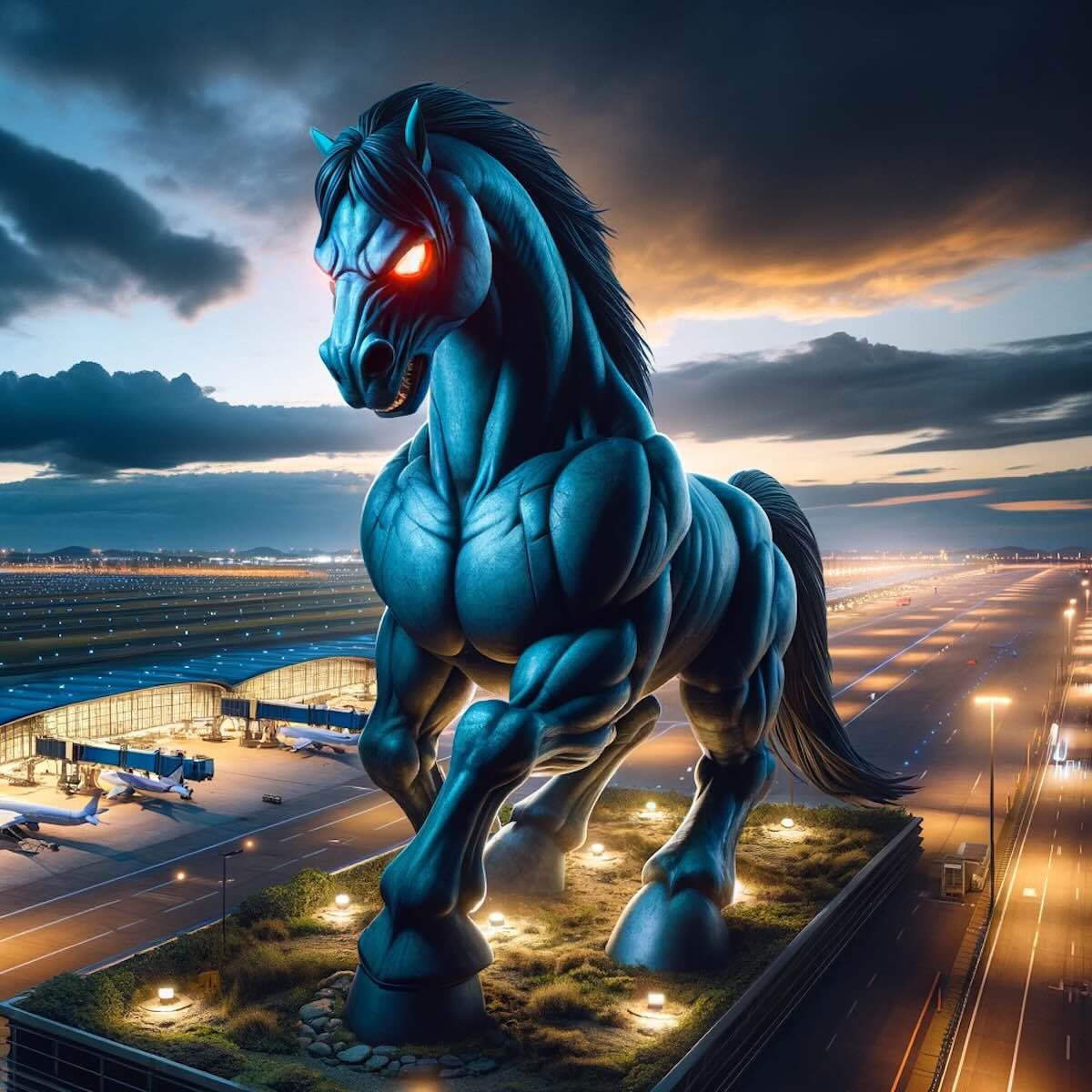Unveiling the Mystery: The Story Behind the Blucifer Statue
Denver International Airport (DIA) serves not only as a vital hub for travelers but also as the backdrop for one of the most enigmatic and debated pieces of public art in the United States. This piece is none other than the massive, cobalt-blue mustang with glowing red eyes, colloquially known as "Blucifer." Officially titled "Blue Mustang," this sculpture prompts a pressing question: What is the story behind the Blucifer statue?
The Artistic Vision Behind Blue Mustang
The brainchild of Luis Jiménez, an American artist celebrated for his vibrant and often provocative fiberglass sculptures, Blue Mustang channels the dynamic spirit and cultural heritage of the American West. Jiménez's vision was to create a piece that encapsulated the wild, untamed power of the mustang, a symbol deeply ingrained in the history and mythology of the American frontier.
Measuring 32 feet in height and weighing over 9,000 pounds, the Blue Mustang is a monumental work that commands attention. Its vivid blue hue and fierce expression are accentuated by the glowing red eyes, a feature that has become the focal point of much speculation and intrigue, particularly when illuminated against the night sky.
Tragedy and Legacy: The Fate of Luis Jiménez
The story of the Blue Mustang is tinged with tragedy, as its creator, Luis Jiménez, met a fatal accident while completing the sculpture. In 2006, a section of the statue fell on him, causing injuries that led to his death. This tragic incident has imbued the statue with a somber legacy and has fueled various interpretations of its symbolism and significance.
Jiménez's untimely death has led some to view the Blue Mustang as a haunted or cursed object, while others see it as a poignant reminder of the artist's dedication and passion for his craft. The sculpture stands as a tribute to Jiménez's artistic legacy, embodying his bold aesthetic and his commitment to capturing the cultural narratives of the American Southwest.
Cultural Impact and Public Reception
Since its unveiling in 2008, the Blue Mustang has polarized public opinion. Its imposing presence and distinctive style have made it a subject of debate and a target for both criticism and admiration. Some argue that its intimidating appearance is not fitting for a welcoming symbol at an international airport, while others applaud its artistic merit and the conversation it sparks about art and expression in public spaces.
The sculpture has also become a focal point for various urban legends and conspiracy theories, particularly in the context of the myriad of mysteries and speculations surrounding Denver International Airport itself. These narratives add another layer to the statue's mystique, making it a landmark that is shrouded in mystery and rich in storytelling potential.
Blucifer: An Iconic Landmark
Today, the Blue Mustang stands as an iconic landmark for Denver and a must-see for visitors to the airport. It embodies the complexity and depth of public art, challenging observers to confront their perceptions and engage with the underlying themes it represents. Whether it is viewed as a masterpiece or a monstrosity, Blucifer has undoubtedly achieved a significant status in the cultural landscape of Denver.
In the broader context of public art, the Blue Mustang serves as a compelling case study in the power of art to evoke emotion, provoke debate, and leave a lasting impact on its audience. It is a testament to the artist's vision and a bold expression of the spirit of the American West, inviting onlookers to delve deeper into the stories and meanings that it embodies.
In conclusion, the Blue Mustang, or Blucifer, is more than just a sculpture; it is a narrative in itself, woven with themes of creativity, controversy, tragedy, and legacy. Its story invites us to reflect on the nature of public art and its capacity to resonate, challenge, and inspire. As it stands at the gateway to Denver, Blucifer continues to be a symbol of artistic boldness and a subject of endless fascination.

